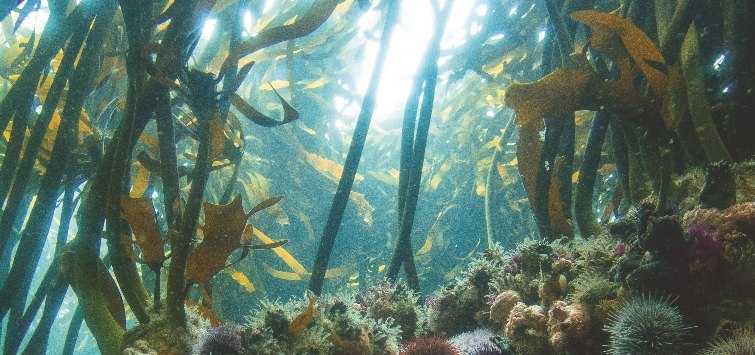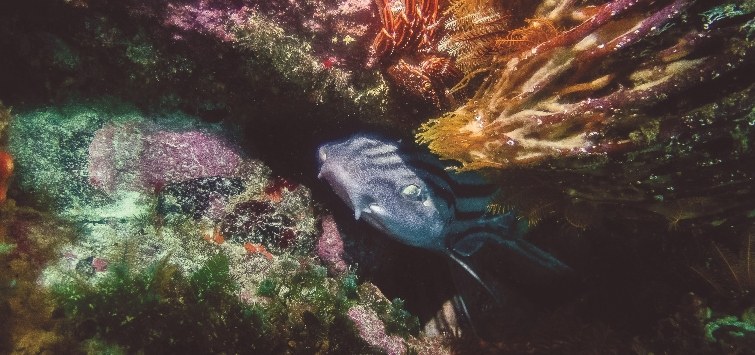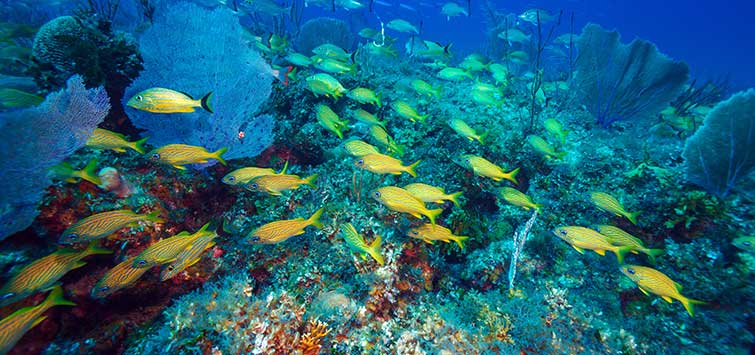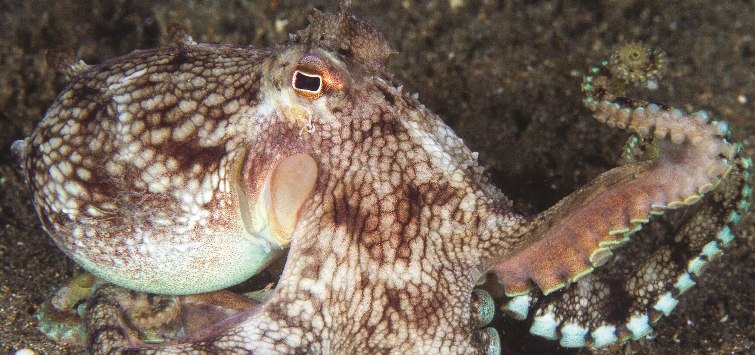My Adventures Diving off Cape Town, South Africa
Saturday morning. Midwinter. The air is crisp, the sun straining through the clouds. At Windmill Beach, a Cape Town diving site favored by beginners and snorkelers, the parking lot is already full. Stephen Trombas, the resident A self-appointed car guard, waves me to a spot perilously tucked under thorny bushes. Invariably, he tells me about the ginger he’s been eating for the “poison” in his body, as well as how he once bought a gold necklace that belonged to Cleopatra. He’s a colorful character.
The cold sand of the small beach is strewn with tangled heaps of dry kelp and dotted with towels and huddles of clothing. A group of scuba divers wade backward into the shallow water of the bay’s right channel; in the left channel, two snorkelers squeal excitedly and flap their fins to get a better look at what they’ve found. A tiny boy in a wetsuit splashes his sister.
This beach, at this time of the morning, would have been empty a few years ago, other than a handful of oyster-catcher birds trotting across the rocks and the lumpy outline of the large Cape fur seal that has taken up residence on the granite boulder that splits the bay in two. Since the Oscar win by the documentary My Octopus Teacher, which was filmed in this area, the dive sites are increasingly filled with fins and snorkels. Scuba and freediving schools in the city also have experienced a surge in students.
Daniela Danes, co-founder of Cape Town Freediving, says that although there has been a noticeable uptick in enrollment since the film was released in 2020, activity already had been growing in the last three years. It’s almost as though Capetonians, and the rest of the world, have woken up to the beauty that lies below these chilly waters.
While on land the city is known for its rich biodiversity—the Cape Floral Kingdom is a UNESCO site—Cape Town’s position at the tip of Africa means the cold Atlantic Ocean and warmer Indian Ocean collide, bringing together the best of both marine worlds. Cold brings biomass, and warmth brings biodiversity, and as a result the sea life here is rich, particularly in the many marine-protected areas strung together along much of this particular stretch of coastline.
Diving into False Bay: Windmill Beach

Entering the kelp forest of Windmill Beach.
Even a Cape Town diving site as shallow as Windmill offers an array of animal and plant life that always surprises newcomers, who expect it to be gray, cold, and kelpy, without so much color. The shore entry to the right channel takes you over a stretch of sand. On days with clear visibility, usually in winter, the fine whiteness tinged with aqua has a deceptively tropical appearance to it.Then the kelp forest begins, with ribbons of fronds catching the light. Unlike the giant kelp found off the U.S. coast, the predominant local kelp (Ecklonia maxima) doesn’t float because it has no bladder berries, but it plays an equally important role in providing sheltered habitat and food for many creatures, large and small.
Dive down among the kelp and you will find rock walls splashed with orange by red encrusting sponges, with pink coralline algae sprouting from them like mini pastel forests. Because it is sheltered and shallow, Windmill is a nudibranch-spotting heaven. Among many others, you can see blue-and-yellow gasflames (Bonisa nakaza) the size of hamsters; small endemic Cape dorids (Ceratosoma ingozi), their backs splotched with neon pinks and oranges; and tiny candy nudibranchs (Cuthona speciosa) that are barely visible to the naked eye.
As you slowly glide among the rocks, breath held deep in the cold water, cracks and overhangs reveal boa-like feather-duster worms in colors ranging from dusty pink to burnt orange; urchins; red tube worms; carpets of strawberry anemones, their crystalline tentacle tips like silver crowns; endemic yet uncommon violet-spotted anemones; shy tube anemones; and yellow nippled seafans, while all around you the sun filters through the kelp canopy in gold and bronze.
Because the water temperature averages about 55°F (13°C) in winter and rise to about 62°F (17°C) in summer, there are no tropical hard corals, but clumps of neon pink and yellow soft corals (Alcyonium fauri) cling to kelp holdfasts or filter-feed in bursts of color in gullies, where the rush of water brings with it nutrients.
Windmill Beach’s sheltered waters and friendly depth means even the non-Jacques Cousteaus among us can experience a good chunk of what the ocean offers. Behind a mound of sea squirts known as red bait (Pyura stolonifera) lies the “octopus garden,” a small area filled with rocks and cracks, and the telltale signs of discarded mussel and clam shells. Here, common octopuses peek warily out of their dens, with the occasional brave one reaching out a tentacle to suck onto your hand, wrist, arm, or camera as it tries to tug you into its lair. An Oscar moment!
Because Windmill is a marine-protected area, its South African saltwater fish species are abundant, though to a casual viewer the schools may all seem the same—there’s a lot of silver and gray, with few of the color differentials found in the tropics. Hottentots, blacktail seabream, and Fransmadam are commonly spotted glinting in the sunlight, while red Romans add a splash of color as they boldly patrol their territories, as do the doublesash butterflyfish that side-eye you as they swim past for an inspection.
A favorite sighting is the comical janbruin, a stout dark brown fish with blue eyes and protruding teeth that would give a Chihuahua a run for its money. Occasionally, Cape Town receives some upcountry visitors that get brought in on freak currents—and no doubt eventually freeze to death. Recently, a clutch of Moorish idols, which are normally found up the east coast, arrived at Windmill and, with their tropical flair and flamboyant dorsal fins, became instant Instagram celebrities. Pineapplefish (Monocentris japonica) can sometimes be seen flitting about the pipes and small wrecks in the nearby Simon’s Town harbor.
Water’s Edge

A pajama catshark catches a snooze in a protective crevice of Windmill Beach.
Just north of Windmill lies Water’s Edge, an equally small bay that feels like a private beach, as it is accessed via a latched wooden gate that makes you feel like an intruder. Here, locals keen on getting that Wim Hof “Iceman” glow drift along in bathing suits, watched by a posse of endangered African penguins, part of one of two mainland colonies in South Africa. When these birds hunt in the sea, they fly like birds through the water. Notoriously skittish, they’re gone before you’ve even registered them.In the summer months, between November and February, the bay is home to spotted gully sharks, which come so close inshore that they could give knee-deep waders a fright. They are harmless to humans, though, and the best way to get close to them is to be stealthy, because they are easily disturbed. Take a deep breath, sink to the bottom and wait while you hold onto a kelp stipe, and you might be rewarded by one of these sizable sharks cruising near your face.
Some other squeal-inducing sights (an inward squeal, so as not to frighten them) include short-tail stingrays, which occasionally glide by like huge gray tanks, their grace and agility belying their enormity. The largest stingrays in the world, they can grow up to 6 feet (about 2 meters) wide and weigh almost 800 pounds (360 kg), and it is best to give them space in which to move, as their sting can be lethal.
These bays are also home to other less intimidating chordates, including a variety of small sharks. The aptly named pajama catshark, its black-and-white striped skin resembling old-style prison garb, can often be found snoozing in piles in caves and overhangs. Smaller puffadder shysharks, so named for their tendency to curl up into a ball when threatened, and dark shysharks patrol the reefs and kelp forests in search of snacks, including crustaceans, small bony fish, and polychaete worms.
The “Proper” Atlantic: Coral Gardens

A local octopus, enjoying some newfound fame, poses for the paparazzi at Castle Rock, near Simon’s Town harbor in False Bay.
Across the city, on the “cold side,” lie a number of deeper dive sites popular with more experienced divers, and those who can withstand the frigid waters. To a newcomer, Cape Town’s geography can be confusing. Windmill and Water’s Edge, and the bay where My Octopus Teacher was filmed, are located in False Bay, on the southern peninsula of the country, which runs down to a tip at Cape Point. While technically in the Atlantic Ocean, the bay benefits from the Agulhas current that runs down the east coast of South Africa, bringing warmer waters from the Indian Ocean.Across the city, with the famed Table Mountain as a backdrop, is the Atlantic seaboard. These dive sites are “proper Atlantic,” with the open sea dropping to temperatures as low as 48°F (9°C). Freediving here requires careful reading of the swell and currents, as well as extra neoprene, though some opt for suitless plunges.
Coral Gardens, a rocky reef of granite boulders fringed by tall kelp forests, is one of the most spectacular sites. A short, breath-gasping swim from shore takes you into an underwater world so filled with color that you almost forget to not breathe! Rock faces are carpeted in what initially appear to be hard corals in sherbet-like hues of pink, green, orange, yellow, and purple.
However, these clusters of finger-like creatures are actually noble corals (Allopora nobilis), a type of hydroid that is only found in South Africa and can live for 100 years. In good visibility, usually in the summer months when the prevailing southeastern wind brings an upwelling of cold water, diving among the crevasses feels akin to being in the movie Avatar; it is a world so extraordinarily vivid that it seems as though it’s been painted by a digital wizard.
Sandy Cove
A short drive toward the city brings you to Sandy Cove, another favorite site accessed from a small sandy beach. After a swim through the kelp forest, which is often swarming with the disco oscillations of sea gooseberries and comb jellies, and occasionally moon and compass jellies, you arrive at Strawberry Rock, a large granite boulder packed with squabbling and snoozing South African fur seals.One of three colonies off Cape Town, these endemic mammals, with their Shrek-like ears, have become a popular attraction, though—as with any marine creature—one needs to approach with respect and caution. If they’re in the right mood and are not protecting newborns, these land-clumsy mammals often launch themselves off the rock to join visitors in the water, where they rocket and twirl with agility, leaving silver streams in their wake. There is something so sublime about diving down into their bubbles and then surfacing to a view of the city and the mountain.
Life Goes on Under the Surface
During South Africa’s hard lockdown to curb the spread of COVID-19, beaches were closed for almost two months, which meant shore dives were off-limits. While some complained and a few protested, the absence of regular immersions only made my heart grow fonder for South African saltwater fish species.When I caught a glimpse of the ocean during a state-sanctioned grocery run or one of our exercise windows, I felt comforted knowing that life under the surface was continuing as normal. The pajama sharks would be napping and hunting; the octopuses, sailing over the reefs; the nudibranchs, mating and laying eggs; the seals, arguing over morsels; the sea cucumbers, stuffing food into their mouths; the butterflyfish, fluttering; the anemones, opening and closing like flowers. I knew it was temporary and that one day we’d be back diving in Cape Town again.
And once our borders are reopened and international travel fully resumes, I suspect Windmill Beach on a Saturday morning will be even busier, with more heaps of towels on the sand and accented divers squealing into their snorkels to check out South African saltwater fish species. Yes, because of a film about a man and an octopus, but also because the rich beauty of these protected waters is increasingly a rare thing, worth all the post-dive shivers, claw hands, and chattering teeth. And when I strip off my work clothes and plunge into the cold water, I feel luckier than any hashtag could ever describe.
See the full article on TFH Digital
https://www.tfhdigital.com/tfh/sep_oct_2021/MobilePagedReplica.action?pm=2&folio=58#pg61

.png?h=595&iar=0&w=2781&hash=5FD5E69473BCC22199FBFA2FB71B6033)



